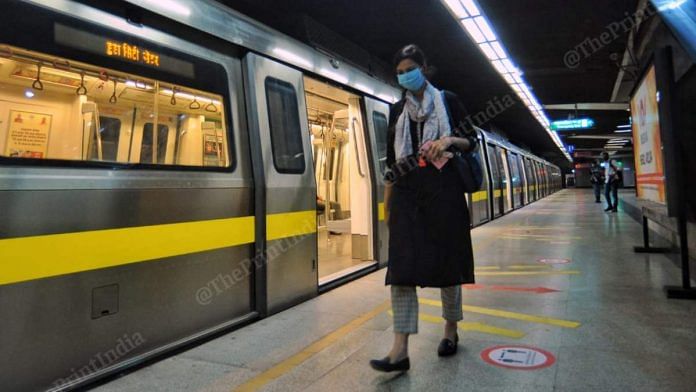Badly written jingles blaring at the highest decibel is not quite the experience passengers sign up for when they travel by Delhi Metro, the supposed lifeline of the capital. But that is the new fate of commuters thanks to Delhi Metro Rail Corporation’s audio advertisements project.
Metro audio was once reserved for important announcements, such as the name of the next station or interchange terminus. Advertisements, necessary to sustain a corporation, were restricted to posters inside and outside the metro, sometimes going so far as obscenely covering the entire train itself.
Why force commuters to listen to these advertisements now? A public transport system used by five million people daily should not be so disrespectful to its main consumers.
It is quite hypocritical for the DMRC – which bans loud music and asks travellers to refrain from talking loudly – to turn around and disturb its own passengers.
No escape from ads
In a world of rampant consumerism, it is admittedly foolish to expect an escape from brands trying to sell you stuff at every corner. From Spotify to YouTube, every service you use inadvertently brings with it a host of ads, unless, of course, you pay for them to go away. But as they say, the medium is just as important as the message.
Delhi Metro users aren’t foreign to ads on their metro cards, train coaches, and platforms. While this constant bombardment of visual ads has desensitised them, it is no license to assault their auditory senses too. Subjecting people to mindless ads is neither a good marketing strategy nor a sound way to deliver a public service.
A government-run organisation such as the DMRC doesn’t need to milk every avenue to earn more revenue. Especially, as a Twitter user pointed out, if the profits don’t help passengers by reducing the cost of their journey. The ads also distract from the main important announcements about stations and can end up confusing new users of the metro.
Also read: Animal didn’t even get biology right. Vanga fanboys are mansplaining periods to women
Metro is for rest, too
Delhi is a massive city of 35 million people, with almost 14 per cent of its population using the metro daily. It carried 6.81 million passengers earlier this year – in just one day.
For most commuters, including myself, the Delhi Metro’s air-conditioned, dimly-lit coaches are synonymous with putting in earphones, kicking back, and relaxing. Apart from a few errant passengers who forget headphones and watch Instagram reels loudly, the metro is surprisingly quiet even in the busiest of junctions, maybe because of peoples’ unspoken rule of respecting each other’s silences. From young office-goers returning after a tiring work day to students returning from strenuous classes, every metro user is entitled to their rest.
Nobody is stopping the DMRC from increasing its revenue, but it should find quieter ways to do so.
(Edited by Zoya Bhatti)



